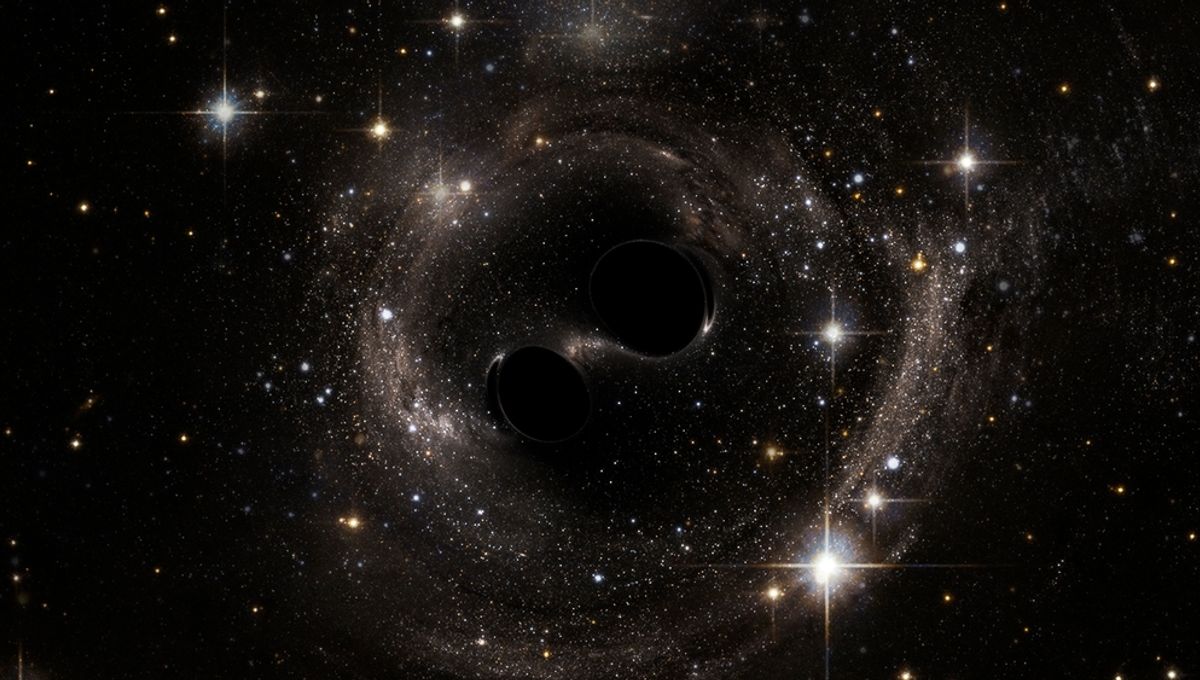
Could black holes be tunnels to other locations in space-time? Could they be wormholes connecting different regions of the universe? A study gives a resounding answer to this question.
Black holes are complicated beasts. They have consistently broken our physics and studying them has opened our eyes to the limitations of our knowledge. One crucial problem is the Information Paradox. Matter can’t escape black holes so, simplistically, once something gets in, its information is lost forever.
That’s a big no-no in physics. The Information Paradox was one of the areas that the late Stephen Hawking focused on. His and others’ work led to the understanding that black holes evaporate and that information is somehow preserved. Understanding exactly how that takes place could provide crucial insight in the quest for unifying quantum mechanics with a theory of gravity.
One of the ways that Herculean task is being attempted is with string theory. String theory posits that the fundamental components of the universe are vibrating strings. So far, there’s no evidence that this is the ultimate theory of nature, but its ability to find solutions to major open questions in physics has been appealing to many.
When it comes to the Information Paradox, there have been multiple proposals on how to solve that in string theory, including the idea that black holes are wormholes, a hypothetical construct very popular in sci-fi. Wormholes are a proposed connection to two different points in space-time but there’s no evidence that they exist.
A different theory instead sees black holes in string theory as “fuzzballs”, messy constructions that radiate energy (and thus information). Black holes, in this view, are not mostly empty with their whole mass contained in a singularity at its center. They are complex stringy structures.
“What we found from string theory is that all the mass of a black hole is not getting sucked into the center,” Professor Samir Mathur from Ohio State University explained in a statement. “The black hole tries to squeeze things to a point, but then the particles get stretched into these strings, and the strings start to stretch and expand and it becomes this fuzzball that expands to fill up the entirety of the black hole.”
Professor Mathur, who amongst others, put forward the idea of black holes as fuzzballs 18 years ago, put both the fuzzball hypothesis and the wormhole paradigm to the test. Publishing their paper in the Turkish Journal of Physics, Mathur and colleagues pretty much concluded the wormhole approach doesn’t work.
“In each of the versions that have been proposed for the wormhole approach, we found that the physics was not consistent,” Mathur said. “The wormhole paradigm tries to argue that, in some way, you could still think of the black hole as being effectively empty with all the mass in the center. And the theorems we prove show that such a picture of the hole is not a possibility.”
The study is certainly intriguing but there is still a huge debate whether string theory is the correct way to explain reality. So black holes might be even weirder than wormholes and fuzzballs. Or not.
The study was published in the Turkish Journal of Physics.
An earlier version of this article was first published in January 2022.
Source Link: Can Black Holes Lead To Other Places In The Universe?